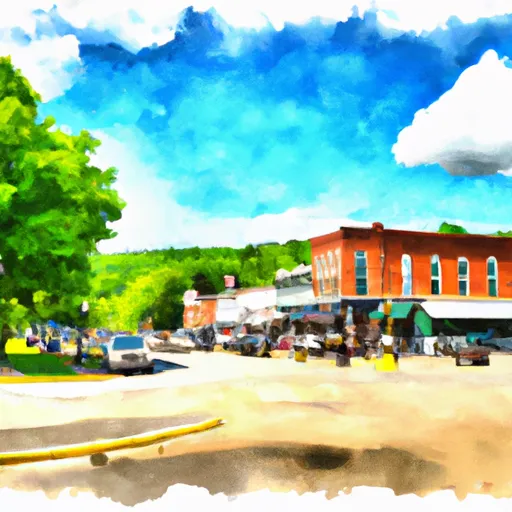-
 Snoflo Premium
Snoflo Premium
Get unlimited access to all our content
With no Ad interruptions! - Start Your Free Trial Login with existing account
Marlboro
Eden Index
Climate
5.6
•
Recreation
4.8
•
Community
0.9
•
Safeguard
4.1/10

Marlboro, Vermont is a charming town situated in Windham County. It experiences a humid continental climate, characterized by warm summers and cold winters. Average temperatures range from around 25°F (-4°C) in winter to approximately 75°F (24°C) in summer. The region is known for its picturesque landscapes, with vibrant foliage during the fall season.
Marlboro is surrounded by natural beauty, boasting several water bodies and hydrology constituents. The Deerfield River, a popular destination for fishing enthusiasts, flows through the town. Additionally, Marlboro is home to several ponds and lakes, including Sunset Lake and South Pond, which offer opportunities for boating, swimming, and picnicking.
The town is a haven for outdoor enthusiasts, offering various recreational activities. Marlboro is renowned for its extensive trail system, perfect for hiking, mountain biking, and trail running. The Hogback Mountain Conservation Area and Marlboro State Forest provide ample opportunities for exploring nature's wonders. In winter, residents and visitors can enjoy cross-country skiing, snowshoeing, and snowmobiling on the pristine trails.
Overall, Marlboro, Vermont offers a picturesque setting, a diverse hydrology ecosystem, and a wide array of outdoor activities throughout the year, making it a wonderful destination for nature lovers and adventure seekers.
What is the Eden Index?
The Snoflo Eden Index serves as a comprehensive rating system for regions, evaluating their desirability through a holistic assessment of climate health, outdoor recreation opportunities, and natural disaster risk, acknowledging the profound impact of these factors on livability and well-being.
Climate Health Indicator (CHI): 5.6
Marlboro receives approximately
1349mm of rain per year,
with humidity levels near 82%
and air temperatures averaging around
6°C.
Marlboro has a plant hardyness factor of
5, meaning
plants and agriculture in this region thrive during a short period during spring and early summer. Most
plants will die off during the colder winter months.
By considering the ideal temperature range, reliable water supplies, clean air, and stable seasonal rain or snowpacks, the Climate Health Indicator (CHI) underscores the significance of a healthy climate as the foundation for quality living.
A healthy climate is paramount for ensuring a high quality of life and livability in a region, fostering both physical well-being and environmental harmony. This can be characterized by ideal temperatures, reliable access to water supplies, clean air, and consistent seasonal rain or snowpacks.
Weather Forecast
Streamflow Conditions
Lower Connecticut
Area Rivers
Lower Connecticut
Snowpack Depths
Lower Connecticut
Reservoir Storage Capacity
Lower Connecticut
Groundwater Levels
Recreational Opportunity Index (ROI): 4.8
The Recreational Opportunity Index (ROI) recognizes the value of outdoor recreational options, such as parks, hiking trails, camping sites, and fishing spots, while acknowledging that climate plays a pivotal role in ensuring the comfort and consistency of these experiences.
Access to outdoor recreational opportunities, encompassing activities such as parks, hiking, camping, and fishing, is crucial for overall well-being, and the climate plays a pivotal role in enabling and enhancing these experiences, ensuring that individuals can engage in nature-based activities comfortably and consistently.
Camping Areas
| Campground | Campsites | Reservations | Toilets | Showers | Elevation |
|---|---|---|---|---|---|
| Fort Dummer State Park | None | 562 ft | |||
| Winhall Brook | 110 | 1,071 ft | |||
| Grout Pond | None | 2,303 ft | |||
| Chester - Blanford State Forest | 12 | 516 ft | |||
| Townshend State Park | 35 | 586 ft | |||
| Molly Stark State Park | 35 | 1,968 ft | |||
| Westover ARB Military | None | 237 ft | |||
| Barton Cove | 30 | 206 ft | |||
| DAR State Forest | 50 | 1,456 ft | |||
| Mohawk Trail State Forest | 56 | 762 ft |
Nearby Fishing
Nearby Ski Areas
Catastrophe Safeguard Index (CSI):
The Catastrophe Safeguard Index (CSI) recognizes that natural disaster risk, encompassing floods, fires, hurricanes, and tornadoes, can drastically affect safety and the overall appeal of an area.
The level of natural disaster risk in a region significantly affects safety and the overall livability, with climate change amplifying these risks by potentially increasing the frequency and intensity of events like floods, fires, hurricanes, and tornadoes, thereby posing substantial challenges to community resilience and well-being.
Community Resilience Indicator (CRI): 0.9
The Community Resilience Indicator (CRI) recognizes that education, healthcare, and socioeconomics are crucial to the well-being of a region. The CRI acknowledges the profound impact of these elements on residents' overall quality of life. By evaluating educational resources, healthcare accessibility, and economic inclusivity, the index captures the essential aspects that contribute to a thriving community, fostering resident satisfaction, equity, and social cohesion.

